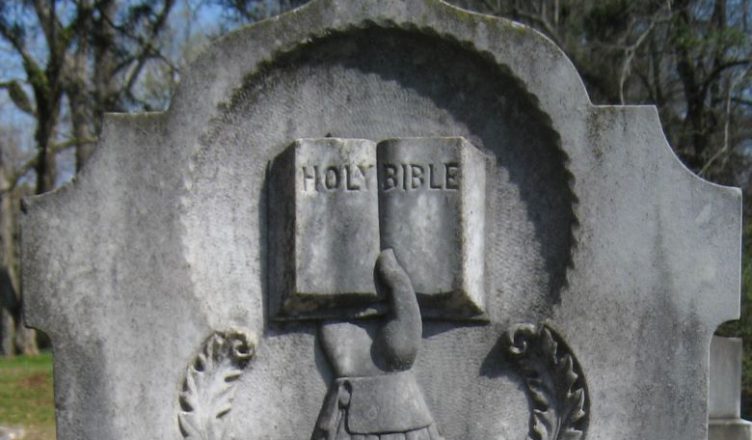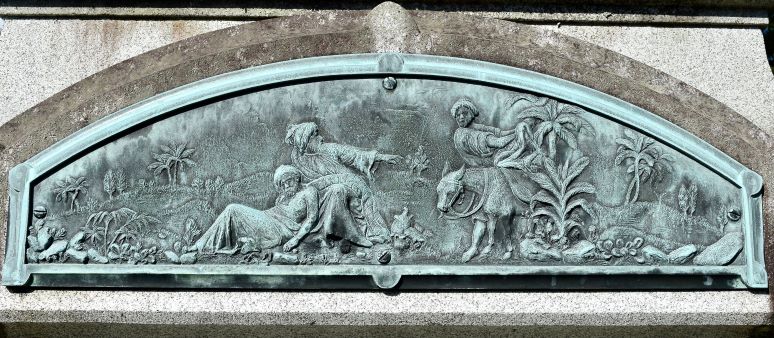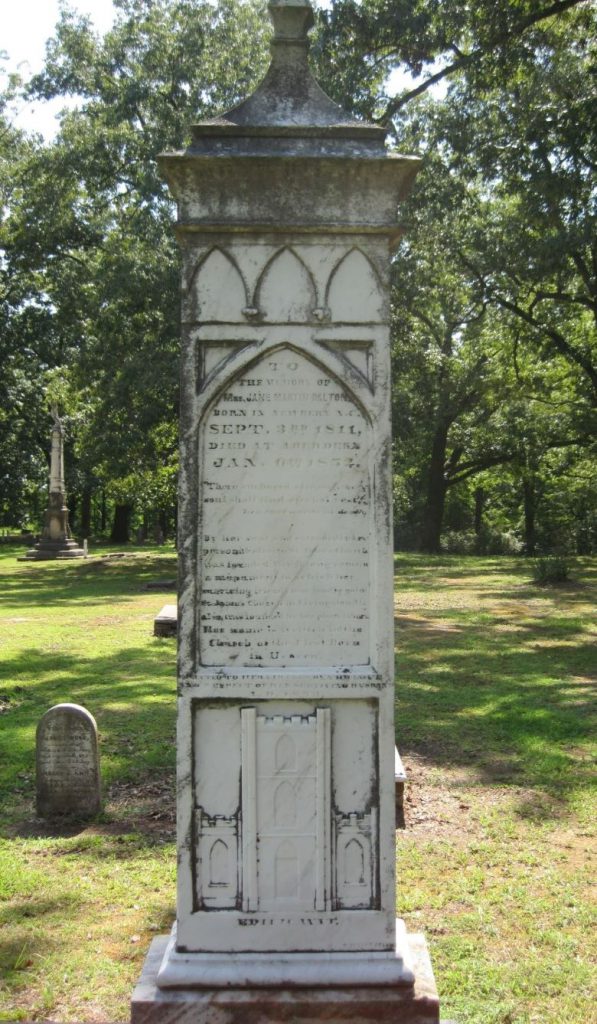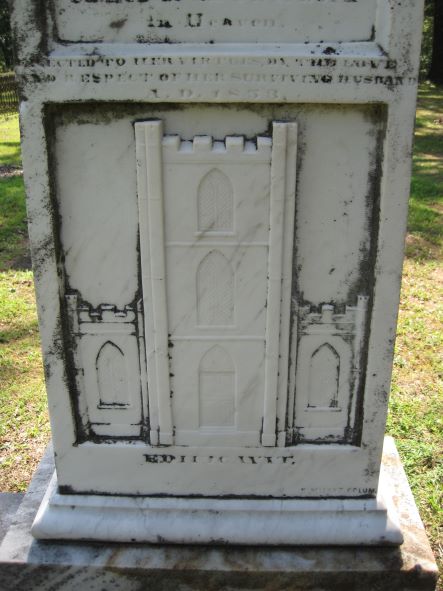While religious iconography is fairly common in the cemetery, tombstones with a bas relief depiction of a Bible story are somewhat unusual. The “Parable of the Good Samaritan” was sometimes used for physicians that risked their lives on yellow fever victims. The “Heavenly City” is another motif depicted in a variety of ways to represent “Many Mansions” per John 14:2 and is sometimes seen on newer, granite tombstones with a open gate. The literal representation of Ecclesiastes 12.6-7 sparked marble carver’s creativity with flowing water, a broken wheel and a shattered pitcher.
The Parable of the Good Samaritan
Luke 10:24-37: Jesus said: “A man was going down from Jerusalem to Jericho, when he was attacked by robbers. They stripped him of his clothes, beat him and went away, leaving him half dead. A priest happened to be going down the same road, and when he saw the man, he passed by on the other side. So too, a Levite, when he came to the place and saw him, passed by on the other side. But a Samaritan, as he traveled, came where the man was; and when he saw him, he took pity on him. He went to him and bandaged his wounds, pouring on oil and wine. Then he put the man on his own donkey, brought him to an inn and took care of him. The next day he took out two denarii and gave them to the innkeeper. ‘Look after him,’ he said, ‘and when I return, I will reimburse you for any extra expense you may have.’
“Which of these three do you think was a neighbor to the man who fell into the hands of robbers?”
The expert in the law replied, “The one who had mercy on him.”
Jesus told him, “Go and do likewise.”
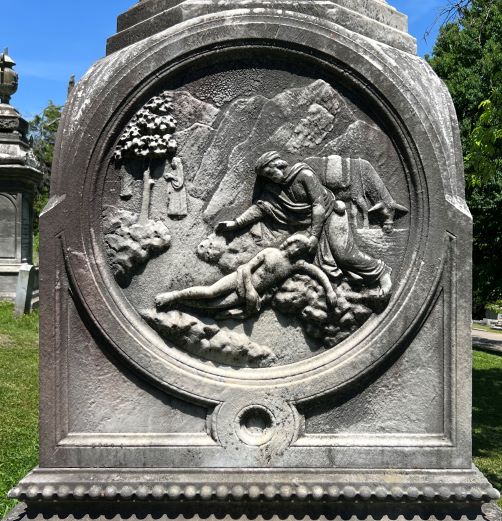
The tombstone of Dr. Madison Pyles in the Cave Hill Cemetery, Louisville, Kentucky depicts the Good Samaritan Parable complete with the donkey, priest and Levite.
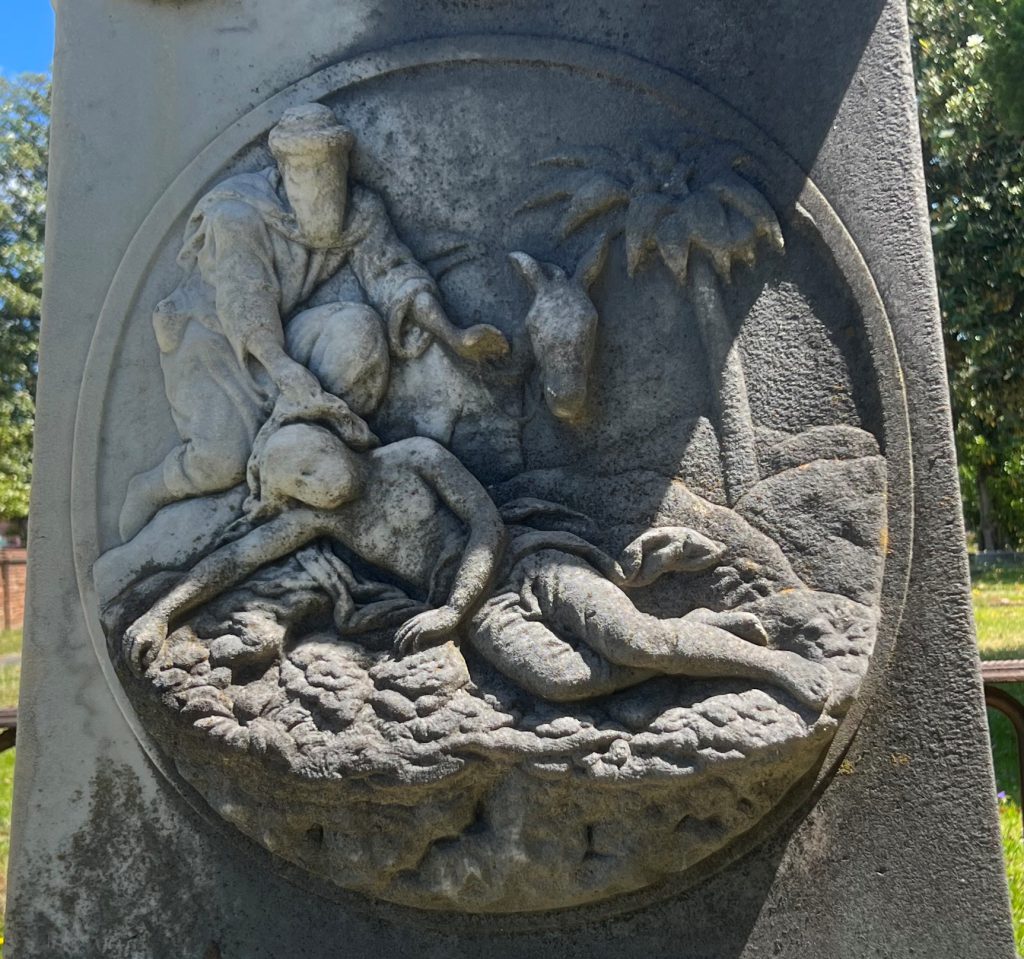
Cenotaph for Dr. James D. Mackie (1818-1854), Magnolia Cemetery, Augusta, Georgia.
Dr. Mackie died of yellow fever in 1854 and is buried at Summerville Cemetery in a box grave with the following epitaph:
He was a good Samaritan: and freely devoted his best energies of his mind and body to the relief of the sick, until death removed him from the scene of his pious labors to commemorate, which a monument has been erected by his friends and a grateful community, in the city cemetery.
Source: Adventures in Cemetery Hopping
Dr. Blackburn is credited with his pioneering efforts to combat yellow fever epidemics. He was also accused of germ warfare during the Civil War for shipping clothing from yellow fever victims to contaminate the Union soldiers in the north. It wasn’t until the 20th century that it was confirmed that yellow fever was a mosquito borne disease. His epitaph reiterates that “sordid aspirations held no sway:”
He earned affection which can die only with the hearts in which his memory is enshrined; and his life consecrated to duty and charity is an example of heroism and fidelity. Chief Magistrate of his native commonwealth his official record is a bright page in her illustrious history, In his great soul justice, honor, and mercy ruled together, and sordid aspirations held no sway. He rests with the blessed who have feared God and loved their fellow man.
Sources: FindAGrave, H. Leon Greene, Yellow Fever Conspiracy
Ecclesiastes 12.6-7
Remember your Creator before the silver cord is loosed, Or the golden bowl is broken, Or the pitcher shattered at the fountain, Or the wheel broken at the well. Then the dust will return to the earth as it was, And the spirit will return to God who gave it.
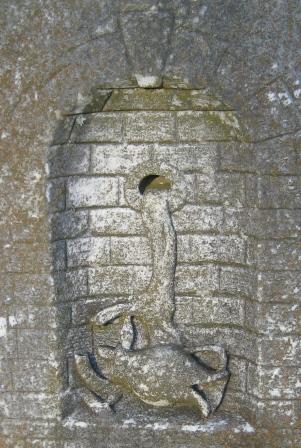
Depiction of the Bible verse Ecclesiastes 12.6-7 which includes a wheel with a broken cord, a shattered pitcher, a broken wheel and water representing the well or spring. These are all illustrations intended to create a mental picture of the finality of physical death.
Oakwood Cemetery
Montgomery, Alabama
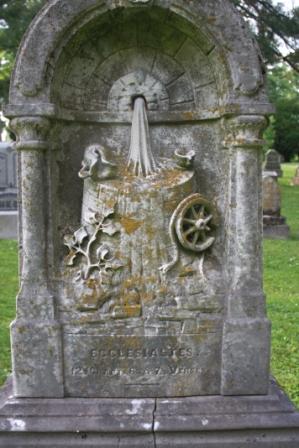
F. P. Kinkead
This tombstone does not have any dates. There is another nearby gravestone for Frank Pearce Kinkead (1861-1876) who died at the age of 15. He was the son of George Pearce Kinkead and Elizabeth Anne Pearce Kinkead.
Lexington Cemetery
Lexington, Kentucky
Heavenly City
“In my Father’s house are many mansions: if it were not so, I would have told you. I go to prepare a place for you.” (John 14:2)
Jane Martin was born September 3, 1811, in New Bern, Craven County, NC, the daughter of Alexander Martin Henderson and Mary [Wallace] Henderson. Jane married Dr. Robert Hunter Dalton on January 6, 1832, at her father’s Mount Pleasant Plantation. In 1835, Dr. Robert & Jane Dalton moved to Livingston, Sumter Co., Alabama, where he practiced medicine until their move in early 1845, to Aberdeen, Monroe Co., Mississippi.
Jane Martin [Henderson] Dalton died in Aberdeen on January 6, 1852, which was the day of her 20th wedding anniversary.
Tombstone signed by Richard Miller, Colum.
Source: FindAGrave
